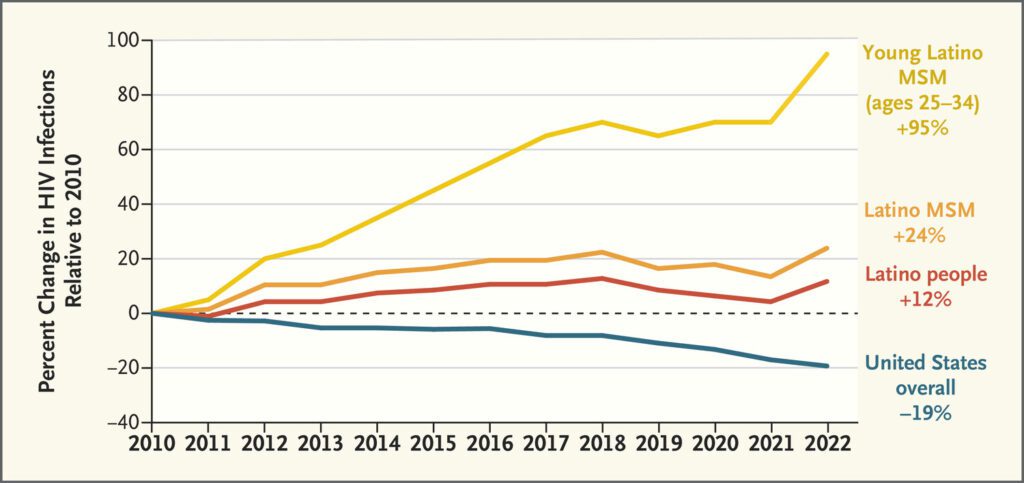
In May 2024, the Centers for Disease Control and Prevention (CDC) released its annual HIV surveillance reports. The new data show a continuation of year-over-year reductions through 2022 in the estimated number of new HIV infections in the United States.1 But disconcerting trends among Latino people — the country’s second-largest racial or ethnic group after White, non-Latino people — reflect persistent failures in HIV-prevention and treatment systems that have been overshadowed by this overall progress.